
On 21 Sep 1961, The Green Beret became the official headgear of the US Army Special Forces.

On 21 Sep 1961, The Green Beret became the official headgear of the US Army Special Forces.
Organic to each of the US Army’s Special Forces Groups are small teams of Signal Intelligence specialists operating in teams called Special Operations Team – Alpha or SOT-A. These in turn are supported by fewer still SOT-Bs. I served on a SOT-A from 1990-96 in 2nd Bn, 3rd SFG(A). The SOTs-A are the direct descendants of the United States Army Security Agency Special Operations Detachments (USASASODs).
While other SOF components have stood up SIGINT support elements over the past decade, SF has had the dedicated capability since before the Vietnam War.
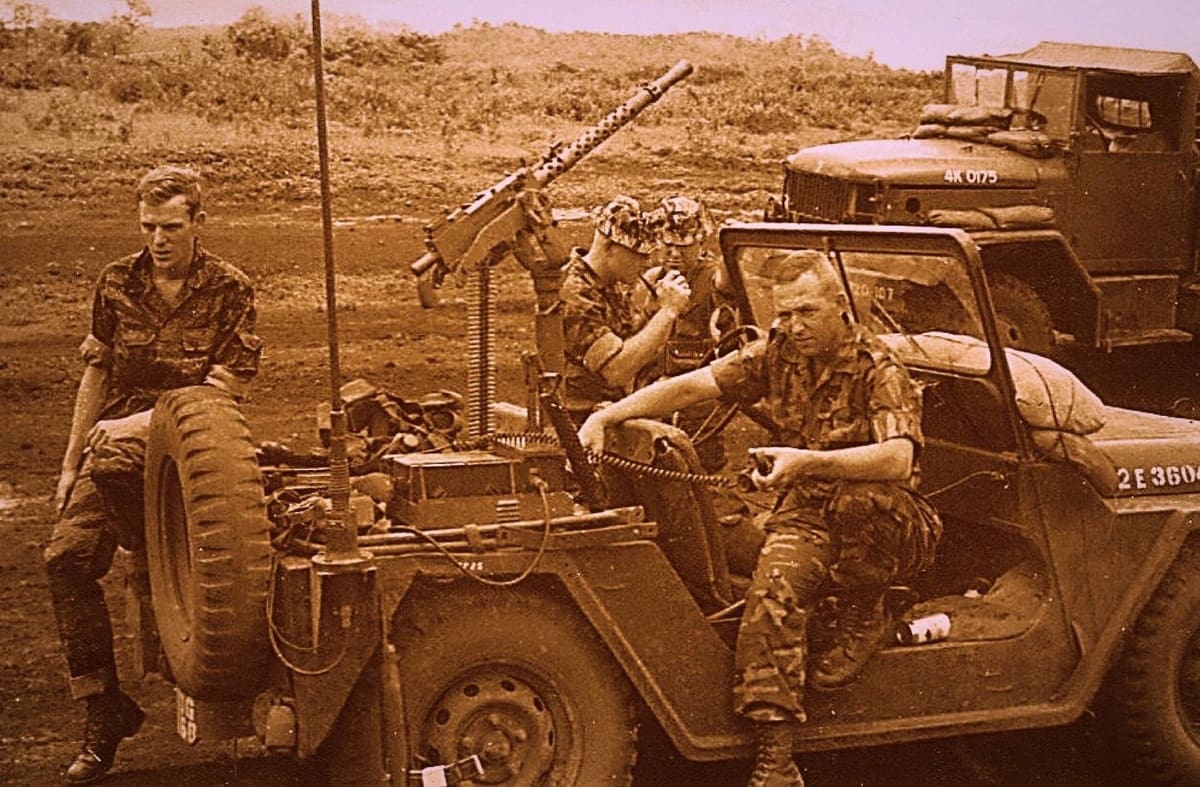
Photograph: The 403rd SOD courier run – Plei Ku to Kontum – 1968 (Photo: INSCOM)
What follows is an “imprecise” history of thier existence from an ASA veteran website.
AN IMPRECISE HISTORY OF THE USASASODS
In the history of mankind, there are fleeting moments of time where, by fate or good judgement on the part of someone, a group of people are brought together at the most appropriate time and place or places to form extraordinary military units.
One such fleeting moment of history, was the formation and life cycle of an extraordinary military unit called the United States Army Security Agency Special Operations Detachment, more commonly referred to as the ASASOD.
One may ask why the ASASODs were called extraordinary and not elite. There are many elite military organizations such as the Roman Legions, Merrill’s Marauders, Rangers, Special Forces, SEALs, etc., however, there are few extraordiary units such as the ASASODs.
Why were the SODs extraordinary? Certainly, the timing was there and so were the places. But, the thing that really made the SOD an extraordinary unit was the people… good Special Forces soldiers…good technicians…loyal, dedicated, brave men…but, most of all, trusted and true friends.
The first SOD was originally formed at Vint Hill Farms Station, VA and relocated to FT Bragg, NC during the summer of 1960 with the 5th and 7th SFG(A)s. Later in 1960, units were organized and located in Okinawa with the 1st SFG(A) and Bad Toelz, GE with the 10th SFG(A). These original SODs were then designated as the 1st (1st SF), 2d (10th SF), 3d (7th SF), and 4th (5th SF) Operational Detachments of the 80th USASA Special Operations Unit (80th USASASOU).
In 1962 these Operational Detachments of the 80th SOU were redesignated as USASA Radio Research Units (RRUs); the 10th RRU (400th SOD) 1st SFG(A), and the 11th RRU (401st SOD) 8th SFG(A) was created, 12th RRU (402d SOD) 10th SFG(A), and the 13th RRU (403d SOD) 5th SFG(A).
During 1963 the units were again redesignated to the final designations we know them as today; the 400th ASASOD, 1st SFG(A); 401st ASASOD, 8th SFG(A); 402d ASASOD, 10th SFG(A); 403d ASASOD, 5th SFG(A) until Jan 64, 7th SFG(A) until Jan 65, and then to the 3d SFG(A) until the 403d’s deployment to RVN with the 5th SFG(A) in 1966.
The SODs remained the same from 1966 until the post-Viet Nam stand down of Special Forces during the early 1970s. With the stand down of the 5th SFG(A) in Viet Nam, the 403d was deactivated and was never again reactivated. On deactivation of the 8th SFG(A) in Panama, the 401st was deactivated for a short while and later reactivated with the 7th SFG(A) at Ft Bragg, NC. In 1974, on deactivation of the 1st SFG(A), the 400th was redeployed from Okinawa to Ft Bragg with the 5th SFG(A). The 402d redeployed from Germany with the 10th SFG(A) to Ft Devens, MA.
The official end of the USASASODs as United States Army Security Agency units came with the deactivation of HQs, USASA and conversion to Combat Electronic Warfare Intelligence (CEWI) organizations in December, 1976. However, even after the designation of USASA, the SODs continued to carry the ASASOD unit designations into the early 1980s when they were redesignated as Combat Intelligence Companies.
By the late 80s, the CBTI Cos were broken apart into Battalion level Military Intelligence Detachments in addition to a Group-level MID. The SOT-As went to the Bn MIDs, three a piece, along with a single SOT-B per Bn. The Group retained the TCAE.
Finning is the process of generating propulsion. In that sense, it is probably the most basic of all the diving skills, and one that most of us are already able to do when we first start diving.
In particular, a better finning technique, choosing the right technique for the right circumstances, can increase your dive’s efficiency.
This will decrease your air consumption, reduce physical fatigue, and extending your dives. Picking the right finning technique will also decrease the amount of silt you turn up. I am going to talk about four types of SCUBAPRO fins. The Jet fin, the Seawing Nova Gorilla, The Seawing Nova, and the Go Sport fins. The Jet Fin is the most wildly used fin in the world by profession divers, the SeaWing Nova, the SeaWing Nova Gorillas (a stiffer version of the Seawing Nova that is great for people that who are strong kickers). The Go Sport fin is new to our line and is a tremendous all-around fin for diving, surface swimming like OTB and River and Stream crossing. Lastly are the Twin Jet fins, again a SCUBAPRO iconic fin; it is used by strong kickers that like to use a flutter kick type stroke.
There are three main fin kicks that any diver should know. These are flutter kicks, frog kicks, and bent-knee cave diver kicks.
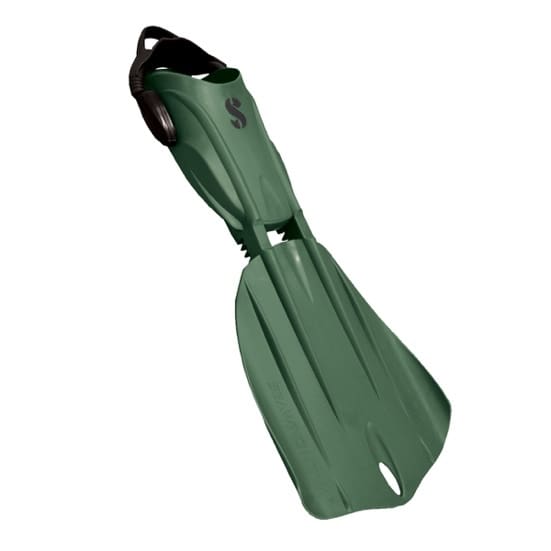
Flutter kicks
The flutter kick is the basic finning technique that most divers use. This technique is similar to the leg part of freestyle swimming.
Watch 90 percent of all divers, and you’ll see them use flutter kicks. In the early days of diving, it was the only technique taught. The reason for its popularity is quite simply that it is the strongest of all the kicking techniques, and it generates a lot of propulsion. Back in the early days of diving, before the invention of the BCD, speed was the primary way of maintaining buoyancy. The advantage of this kick is the forcefulness of it. It is excellent for moving at high speed or when fighting a current. The legs’ vertical up-down movement also means it is beneficial for wall diving, mainly when diving by a wall covered in corals. There’s less risk of kicking something on the side of you like your dive buddy, coral or the finning’s backwash, stirring up sediment. The disadvantages of this kick are related to the advantages. The forcefulness of the kick means that it is relatively strenuous and increases air consumption because of it. The vertical movement can steer up a lot of silt; this is bad for many reasons. If you are on a combat swimmer operation, the trail of silt can give you away. Second, it will make it hard for anyone following you to see their gauges and find the target. (unless you are using the SCUBAPRO HUD dive computer) (shameless plug, but it is excellent for low visibility). In confined spaces like close to the target around the piers or in a cave, it can cause a blackout and make it very hard to see what you are doing.
A fast, powerful technique is useful when fighting a current, for short bursts of speed. The best fins for this are the SCUBAPRO SeaWing Nova Gorillas, The Go Sports, and the Jet fans.
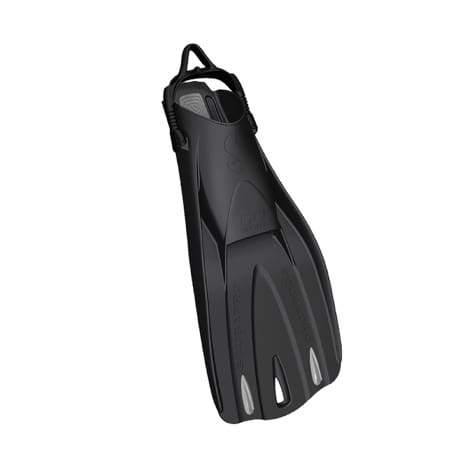
Frog kick
The frog kick looks very similar to the leg portion of the breaststroke from swimming. A large and wide kick that utilizes the leg’s full strength is a good, general technique for open-water diving, either in the water column or close to the bottom. Because the movement and propulsion aren’t continuous, good buoyancy technique is required, though.
The movement here is horizontal, or close to it, meaning that there is minimal disturbance of the bottom when swimming close to the bottom, which will maintain the visibility for any divers that come after you. However, the kick’s width means that the kick isn’t recommended for caves or when diving close to a wall.
This kick, combined with good buoyancy, will quickly become your go-to technique once you get used to it, and will likely decrease your air consumption significantly. The more adequately trimmed your position in the water, and the more you take advantage of the gliding phase before initiating the next kick, the more you’ll reduce your energy (and air) consumption.
The powerful kick that can be extremely efficient, especially if you master the kick-and-glide aspect. Suitable for open-water diving in mild currents, in the water column, or close to the bottom. Not advisable in stronger currents or close to walls.
The best fins for this are the Jet fins.

Bent-Knee Cave Diver Kick
With the complicated name, this technique is the go-to technique for technical divers and is the one that causes the least disturbance of the environment. The bent knees mean that the movement is minimal, with the entire kick coming only from a small movement in the hips, combined with a kick of the ankles. This means that propulsion is limited, compared to the two kicks above, but it also decreases strain and air consumption.
The small movement means that it works well in cramped areas, such as inside wrecks and caves, and, when executed correctly, can minimize the amount of silt kicked up to almost nothing. For this reason, it is also the recommended technique for diving close a very silty bottom, like in a confined space, close to piers or around ships.
![]()
![]()
The slow movement also means that this technique helps you slow down, making it useful for muck dives or other nature dives where you’ll be looking for small animal life. Because it is a very low-propulsion kick, this technique has its limitation when swimming against a current, though. This is a minimal-impact kick that is ideal for cramped environments and close to very silty bottoms, as well as helping you slow down during your dives and maximize your available air. The Jet Fin is the best fin this, and with some practice, the Go Sport is good also.
Lastly, the SeaWing Nova Gorillas come in OD Green or Orange, but they can be special ordered in all black. You can also order the SeaWing Nova in all black. Special orders require a minimum of 24 per size, but we can work to get you want you need.
Contact ecrazz@clannfive.com for more information.
Now in its second version, the Pakhook allows you to hang your pack on a standard clothing rack.
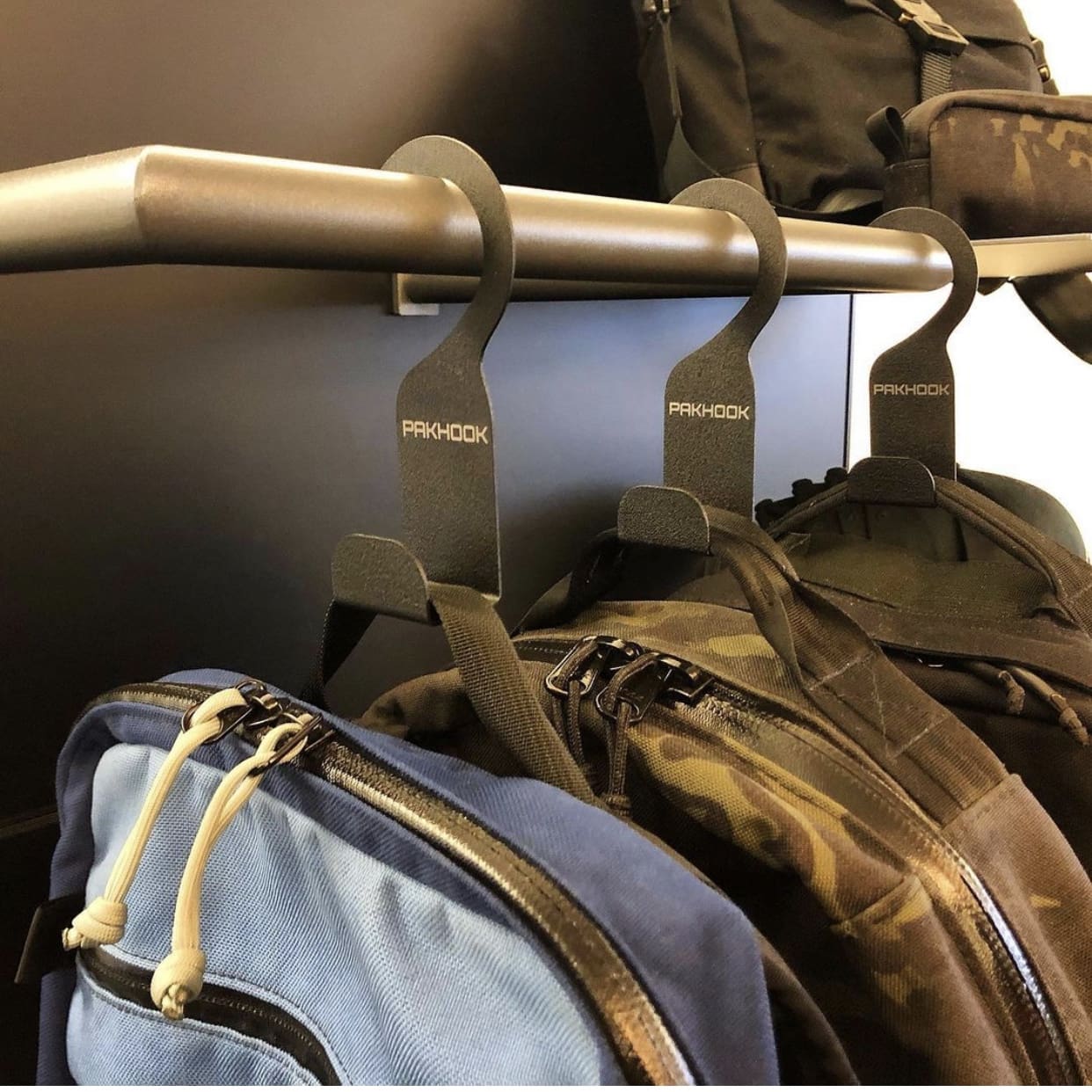
The PakHook is constructed of 18G steel and powder coated.
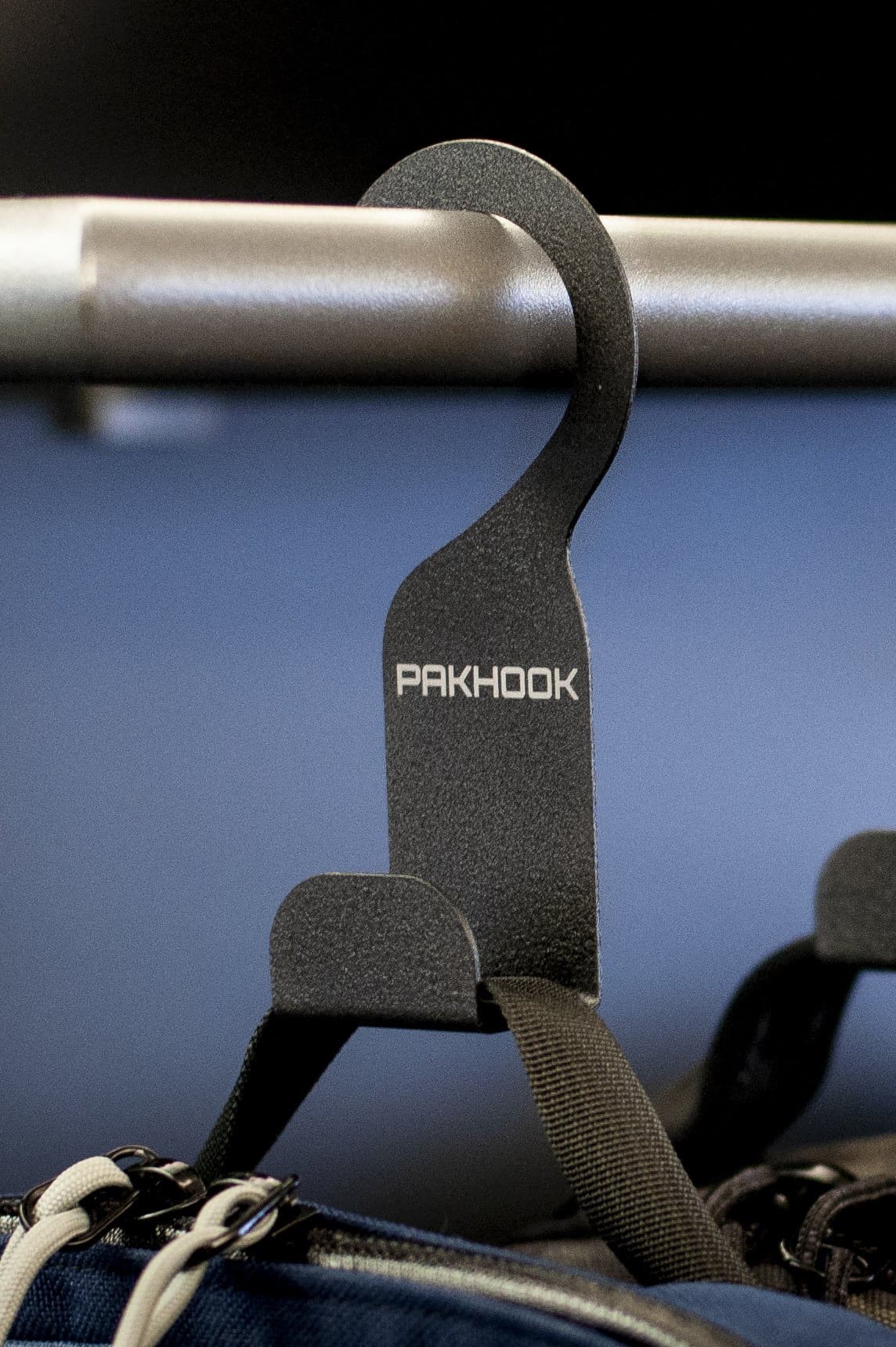
ARLINGTON, Va. (AFNS) —
Secretary of the Air Force Barbara Barrett told Air Force Association conference attendees that the future of Air and Space technology will include aircraft, weapons and satellites which will be digitally engineered and virtually tested before ever taking physical form.
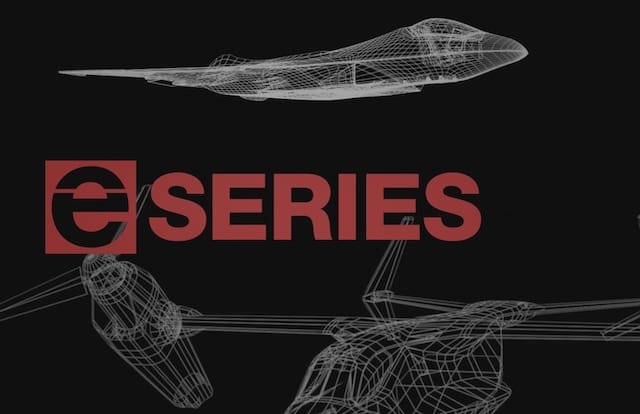
A true paradigm shift, systems being considered for acquisition will be designed, developed and manufactured on a digital foundation, just like the Boeing eT-7A Red Hawk advanced trainer. The new process is part of the Department’s digital eSeries approach.
The secretary made her remarks during the keynote speech at this year’s Air Force Association Air, Space and Cyber Conference, which is being held virtually due to the global pandemic.
“To inspire companies to embrace the possibilities presented by digital engineering, today the Department of the Air Force is announcing a new weapons system designator—the ‘e’ series,” Barrett said. “Aircraft, satellites, weapon systems and more that are digitally engineered will receive an ‘e’ prefix.”
The first U.S. Air Force aircraft designed using the digital approach, the eT-7A Red Hawk, embraced model-based engineering and 3D design tools which reduced assembly hours by 80% and cut software development time in half. The aircraft moved from computer screen to first flight in just 36 months.
Other Air and Space Force programs have leveraged the power of digital engineering to reduce design and testing time. In the future, more Air and Space Force acquisition programs will be using digital engineering principles to design, code and build systems.
According to Air Force officials, an eSeries digital acquisition program will be a fully-connected, end-to-end virtual environment that will produce an almost perfect replica of what the physical weapon system will be. It will bring unprecedented speed and agility to help compete in the technology battlespace by enabling thousands, even millions, of virtual iterations at machine speeds to design the best possible system — but only build the single, best design.
By Secretary of the Air Force Public Affairs
The US Space is only a year old so it hasn’t gotten around to issuing much in the form of regulations or guidance yet, but it has issued guidance on how to wear the Operational Camouflage Pattern uniform, aka the ACU.
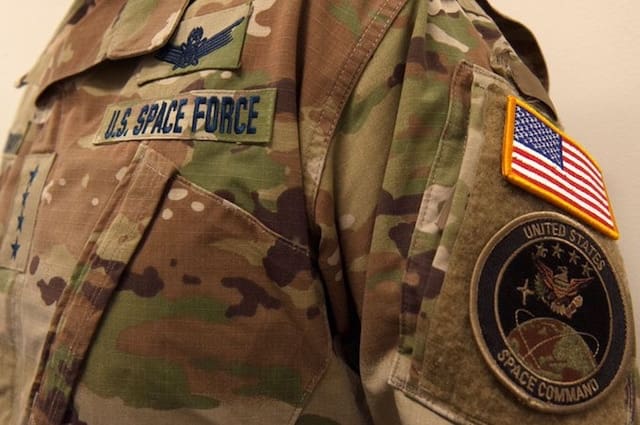
Space Force Guidance Memorandum 2020-36-01 published late last month spells it out. Although there aren’t many enlisted in the fledgling service yet, they’ve already started deploying space support teams to ongoing operations, taking over the role long filled by USAF Space Professionals.
As far as insignia goes, the minimum configuration consists of a full-color US flag patch, grade insignia, occupational badge, and name and service tapes with space blue embroidery on three-color OCP background. Insignia can be sewn on or Velcro, but it all must be the same.
USSF occupational badges are mandatory, but sister revive badges are optional. However, only two can be worn at a time.
The full-color US flag will be worn on the left sleeve, “centered at the top of the velcro, and worn unless deployed to a contingency operation that aligns under separate/independent OCP wear guidance.”
A higher headquarters patch is required to be worn centered below the flag patch on the left. Spice brown subdued patches are authorized until space blue patches are available. The assigned unit patch is required to be worn centered on the velcro patch of the right sleeve.
Space Professionals will wear velcro or sewn-on space blue name tapes on the back of their patrol caps, and officers will also wear rank insignia on the front.
No word on the configuration of enlisted ranks yet, as the service is waiting to see whether they’ll be forced to use naval ranks. But my money is on USAF-style stripes with the star replaced with the Space Force Delta like CMSgt Roger A Towberman is wearing in his official photo as Senior Enlisted Advisor of the United States Space Force.
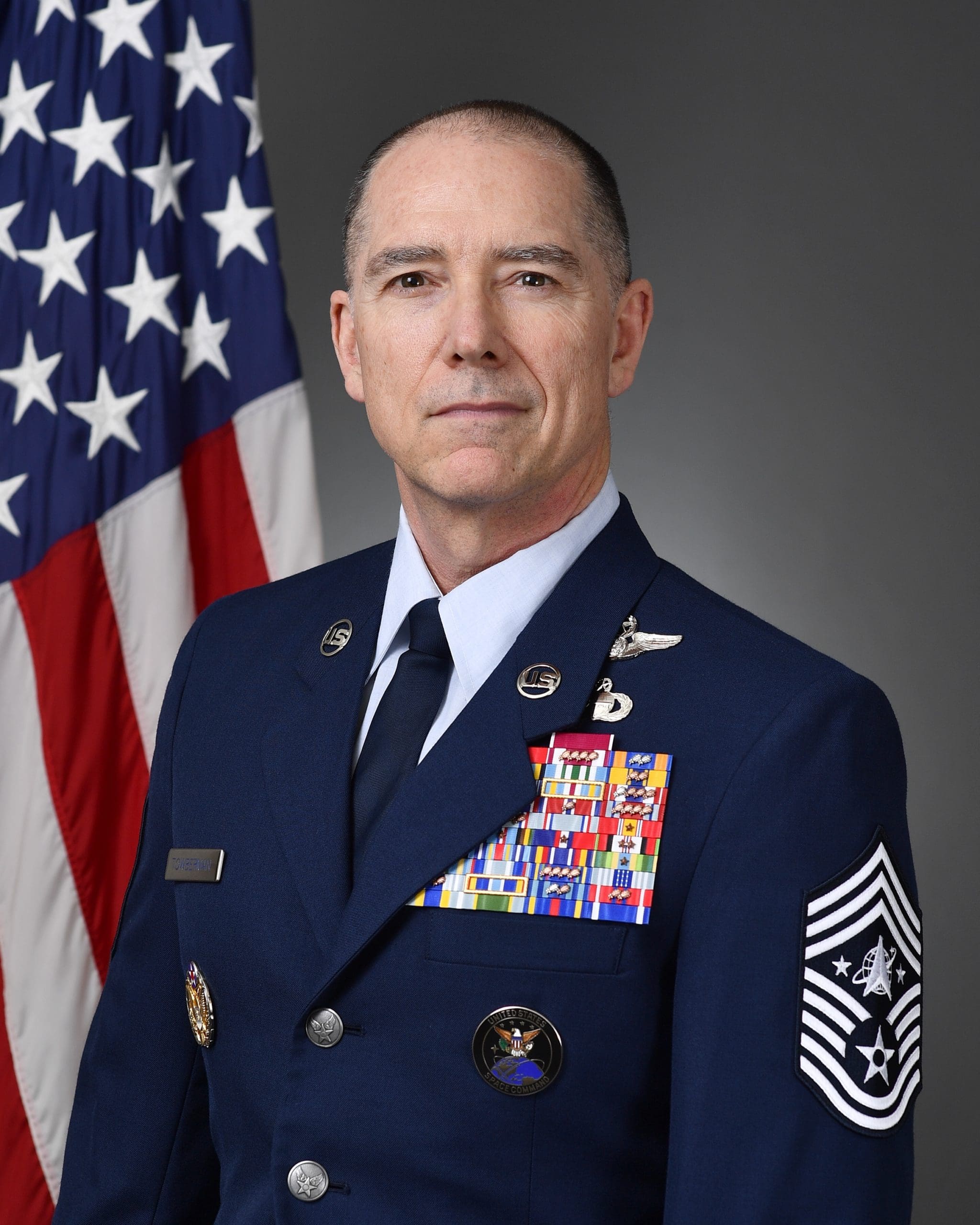
Regardless, there’s a grace period until April 1, 2021, for members to update their uniforms to the Space Force-specific configuration. Former Airmen may also continue to wear ABUs until 1 April.
NAVAL AMPHIBIOUS BASE CORONADO (NNS) – (Sep. 11, 2020) Rear Adm. H. W. Howard III relieved Rear Adm. Collin P. Green as Commander, Naval Special Warfare Command (NSWC) during a change of command ceremony at Naval Amphibious Base Coronado, Sept. 11, 2020.
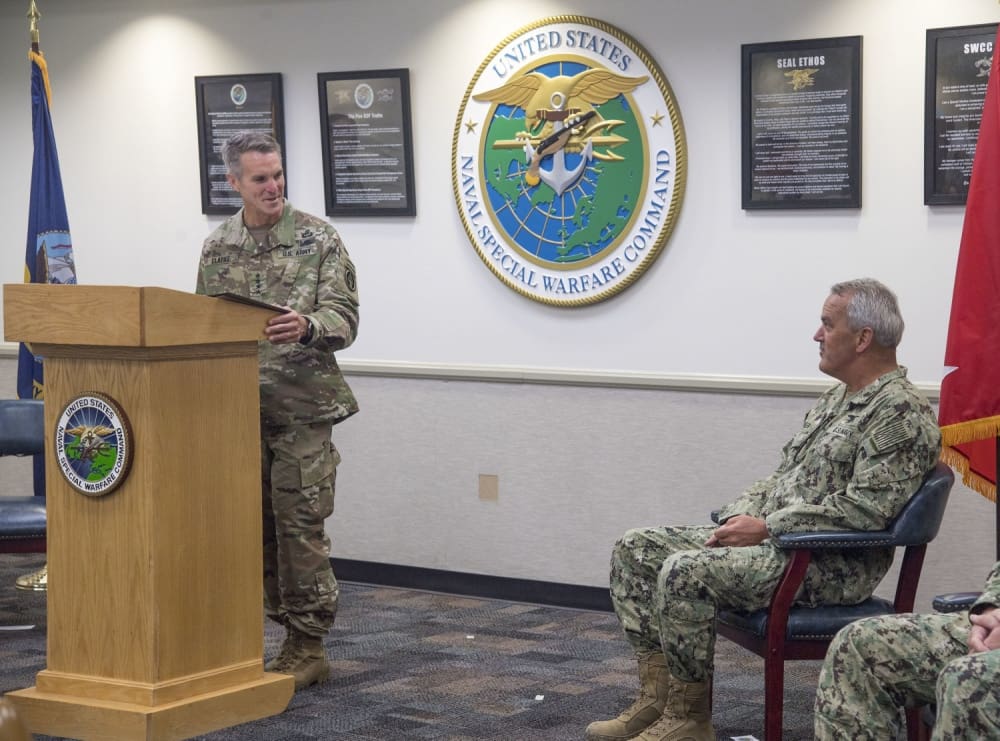
U.S. Army General Richard D. Clarke, commander, United States Special Operations Command (USSOCOM) was the presiding officer.
“But on all days, today, September 11th, we all remember an event that changed many things for our country. And for our special operations forces, it changed our course, it changed many of our joint force individuals, and changed many families for years to come. And I would ask everyone to keep that foremost in your mind today, as we recognize the import of today’s event,” said Clarke. “For 19 years, SOF has been the tip of the spear operating around the globe to protect our American people, our interest and our way of life. From the beginning the Navy SEALs and the entire NSW team has been an absolutely essential part of that effort. …The incredible ethos of teamwork and excellence established in the tradition of this command firmly holds true today.”
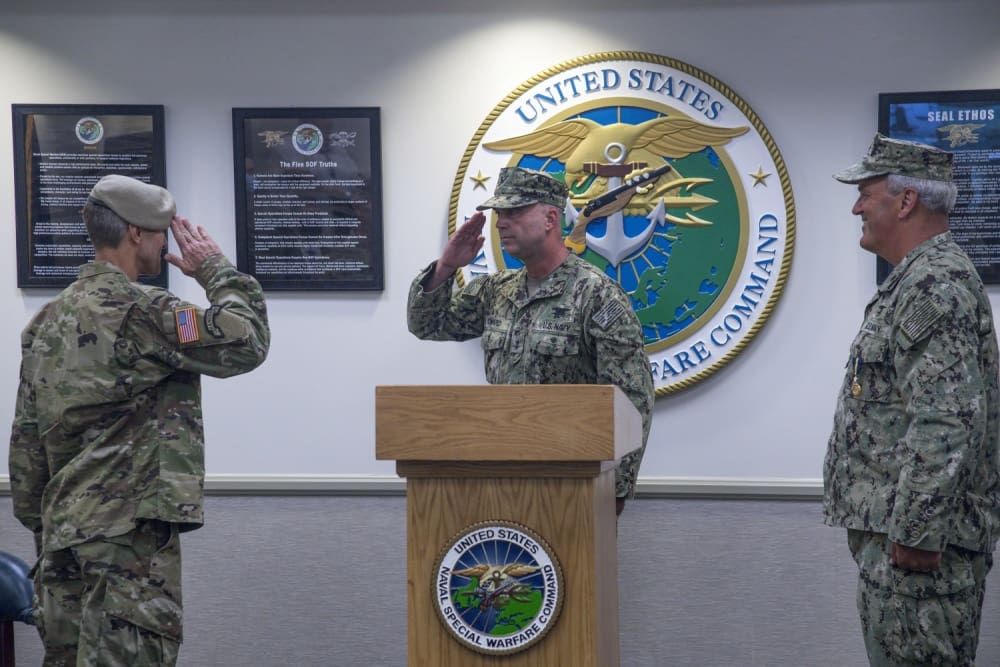
Green assumed command of NSWC in July 2018 and in his next assignment, he will serve as chief of staff, U.S. Special Operations Command.
Howard arrives as Commander, NSWC from his most recent assignment as Commander, U.S. Special Operations Command Central located at MacDill Air Force Base, Fla.
NSW Command is committed to its Sailors and the deliberate development of their tactical excellence, ethics, and leadership as the nation’s premiere maritime special operations force supporting the National Defense Strategy.
NSW is the maritime component of U.S. Special Operations Command, and its mission is to provide maritime special operations forces to conduct full-spectrum operations, unilaterally or with partners, to support national objectives.
Courtesy Naval Special Warfare Command
ANOKA, Minnesota – September 17, 2020 – Joining the “It’s Federal Season” podcast is Nick Hoffman, host of Nick’s Wild Ride on Outdoor Channel. Nick has traveled the globe, either playing his fiddle with country music stars, his own band or as a solo star as well as hunting the world’s diverse quarry. How has he combined his passions into careers many only dream of? Find out all the twists and turns of Nick’s amazing story from humble beginnings growing up in rural Minnesota to stardom in Nashville on this crazy half hour ride.
Episode No. 12 – Going to be a Wild Ride
www.federalpremium.com/podcast
“Nick has such a unique story with the Federal family,” says Federal Ammunition’s Vice President of Marketing Jason Nash. “Nick literally grew up in the shadows of the factory of Federal Ammunition in Anoka, MN. His family has a connection with Federal that goes back long before he was born and it’s really cool to tie the historical circle back together with a sponsorship of his popular television show,” says Nash. Hoffman details his relationship with Federal Ammunition, his path to country music stardom, and the influencers in his music career and hunting lifestyle show on the popular Outdoor Channel network.
In the Tech Talk segment, Federal has a long history of loading Premium bullets for hunters pursuing their dream animal, which could be that 6 ½ year-old buck that’s been calling the ‘back forty’ home for years. Director of Product Development Jared Kutney weighs in on bullet construction and all the attributes that make Federal’s new Terminal Ascent the go to bullet on the market today. Kutney gives his recommendations and an informative review on many popular bullets and the game they are best suited for that makes this segment a must listen to before seasons open this fall.
Before signing off, find out what promotions are available for consumers to buy Federal products and merchandise. Look for more podcasts at www.federalpremium.com or where you find your favorite podcasts.
Federal ammunition can be found at dealers nationwide or purchased online direct from Federal. For more information on all products from Federal or to shop online, visit www.federalpremium.com.